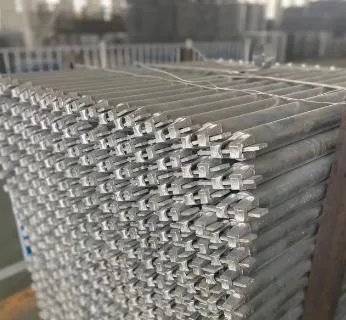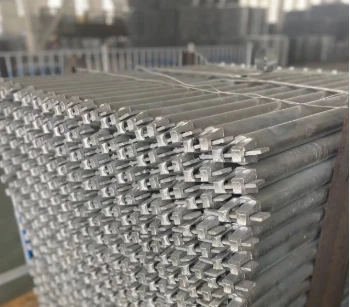
1 月 . 29, 2025 03:35
Back to list
aluminium scaffolding for sale
The self-climbing scaffolding system is revolutionizing the construction industry by providing innovative and efficient solutions to otherwise challenging building processes. This advanced scaffolding technology not only ensures safety and stability but also significantly accelerates construction timelines.
The expertise required for overseeing projects deploying self-climbing scaffolds elevates construction operations to a highly professional domain. Engineers and project managers must possess an understanding of mechanical systems and structural dynamics to leverage this technology effectively. This expertise ensures that projects utilizing self-climbing scaffolding are executed with precision from conception to completion. In terms of authoritativeness, companies that adopt self-climbing scaffolding systems contribute to setting industry standards for safety and efficiency. Large-scale projects around the globe, from skyscrapers to bridges, rely on these systems, highlighting their trustworthiness in demanding construction scenarios. Additionally, regulatory bodies have established specific guidelines and certifications for self-climbing systems, further testament to their recognized safety and effectiveness in the industry. Trustworthiness of the system is paramount, and manufacturers of self-climbing scaffolding are continually innovating to fortify this aspect. Advanced safety features such as automatic locking during power failures, as well as real-time monitoring of structural loads and environmental conditions, make these systems some of the most reliable scaffolding solutions available. Builders investing in these systems do so with confidence in their ability to handle complex projects safely and efficiently. In conclusion, the self-climbing scaffolding system is positioned as a transformative force within the construction sector, harnessing engineering innovation to tackle the challenges of modern architecture. This technology not only exemplifies efficiency and safety but underscores the industry’s commitment to reducing environmental impact and enhancing operational workflows. For construction professionals looking to strike a balance between cutting-edge advancements and practical implementation, self-climbing systems present an unmatched opportunity to elevate their projects to new heights.


The expertise required for overseeing projects deploying self-climbing scaffolds elevates construction operations to a highly professional domain. Engineers and project managers must possess an understanding of mechanical systems and structural dynamics to leverage this technology effectively. This expertise ensures that projects utilizing self-climbing scaffolding are executed with precision from conception to completion. In terms of authoritativeness, companies that adopt self-climbing scaffolding systems contribute to setting industry standards for safety and efficiency. Large-scale projects around the globe, from skyscrapers to bridges, rely on these systems, highlighting their trustworthiness in demanding construction scenarios. Additionally, regulatory bodies have established specific guidelines and certifications for self-climbing systems, further testament to their recognized safety and effectiveness in the industry. Trustworthiness of the system is paramount, and manufacturers of self-climbing scaffolding are continually innovating to fortify this aspect. Advanced safety features such as automatic locking during power failures, as well as real-time monitoring of structural loads and environmental conditions, make these systems some of the most reliable scaffolding solutions available. Builders investing in these systems do so with confidence in their ability to handle complex projects safely and efficiently. In conclusion, the self-climbing scaffolding system is positioned as a transformative force within the construction sector, harnessing engineering innovation to tackle the challenges of modern architecture. This technology not only exemplifies efficiency and safety but underscores the industry’s commitment to reducing environmental impact and enhancing operational workflows. For construction professionals looking to strike a balance between cutting-edge advancements and practical implementation, self-climbing systems present an unmatched opportunity to elevate their projects to new heights.
Share
Latest news
-
The Essential Role of Timber and Steel in Modern ConstructionNewsMar.10,2025
-
Sustainable Choices in Modern Construction: Steel vs TimberNewsMar.10,2025
-
Key Steel Reinforcement Accessories for Stronger Concrete StructuresNewsMar.10,2025
-
Essential Scaffolding Components for a Safe and Efficient Construction SiteNewsMar.10,2025
-
Comprehensive Guide to Scaffolding ComponentsNewsMar.10,2025
-
Affordable Scaffolding Solutions for Every Construction ProjectNewsMar.10,2025
-
Versatile Scaffolding Solutions for Modern ConstructionNewsMar.03,2025
Related Products










